Wooden Table Full of Secret Storage
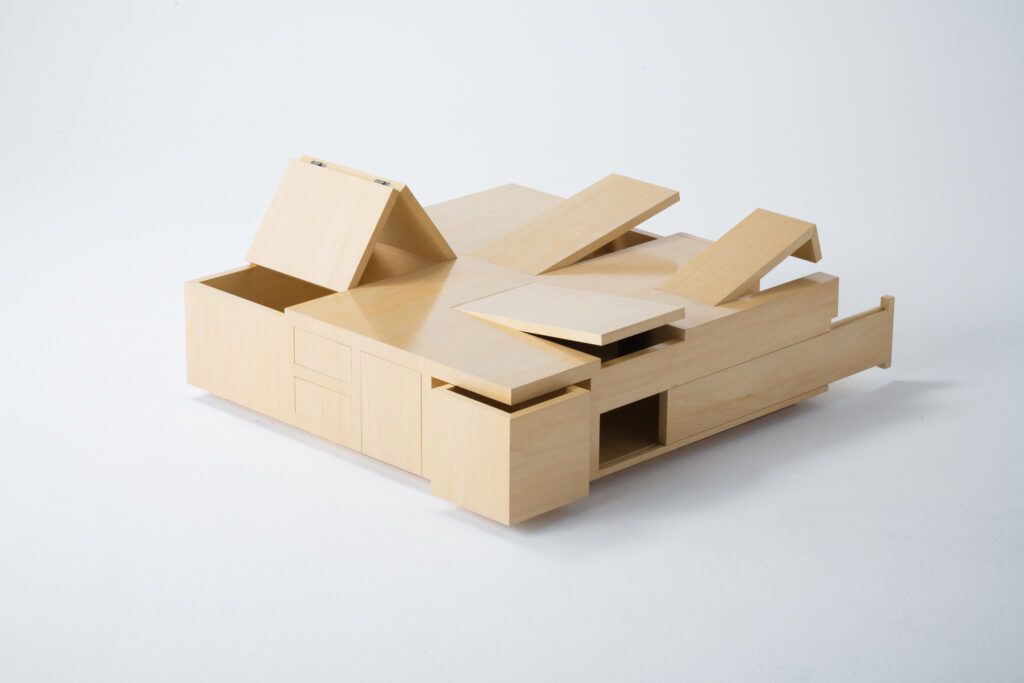
Every kind of conceivable opening is built into this multifaceted rectangular table that swings, slides, pivots and bends open on all sides.
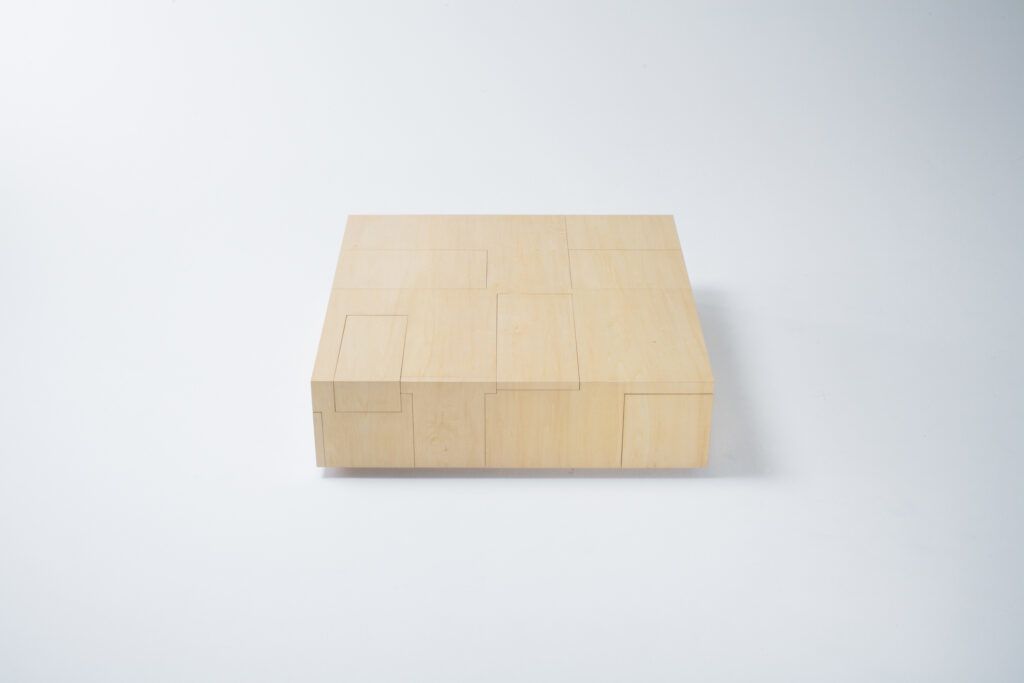
Naoki Hirakoso put work, though, not only into the openings but in how they would look and work when closed – subtly abstract lines traced around the sides of this otherwise plain and linear box. Made of plywood and measuring about 35 inches square, the Kai Table is ideal for use as a coffee table in a space where storage is badly needed.
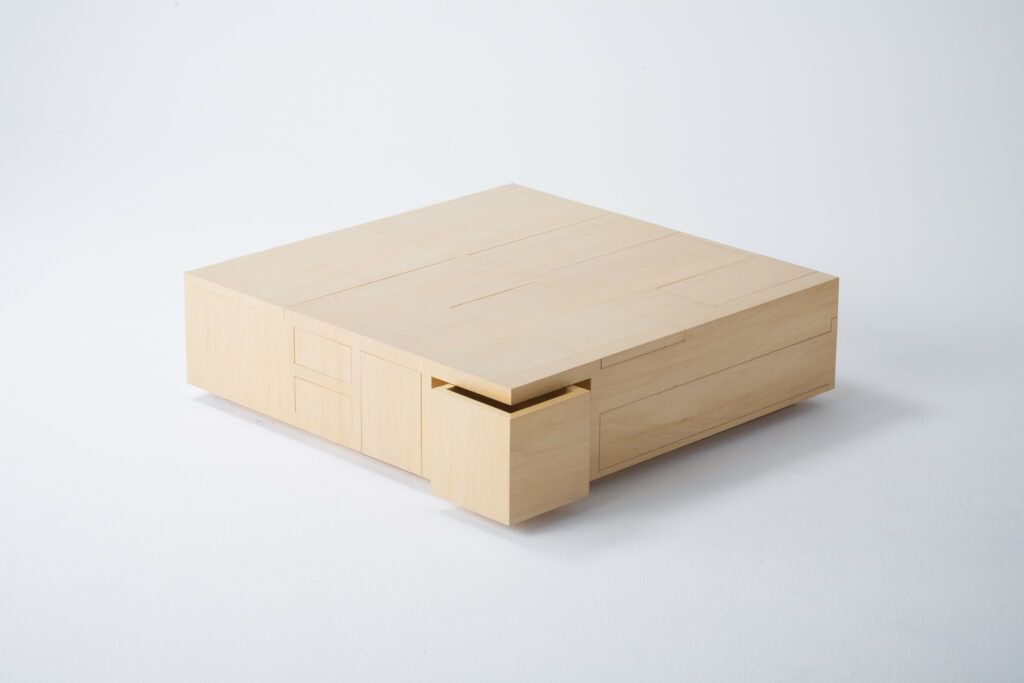
Simple light-colored, gloss-finished plywood contrasts with the dark recesses that emerge when the panels and drawers flip open, creating contrast without variations in color.
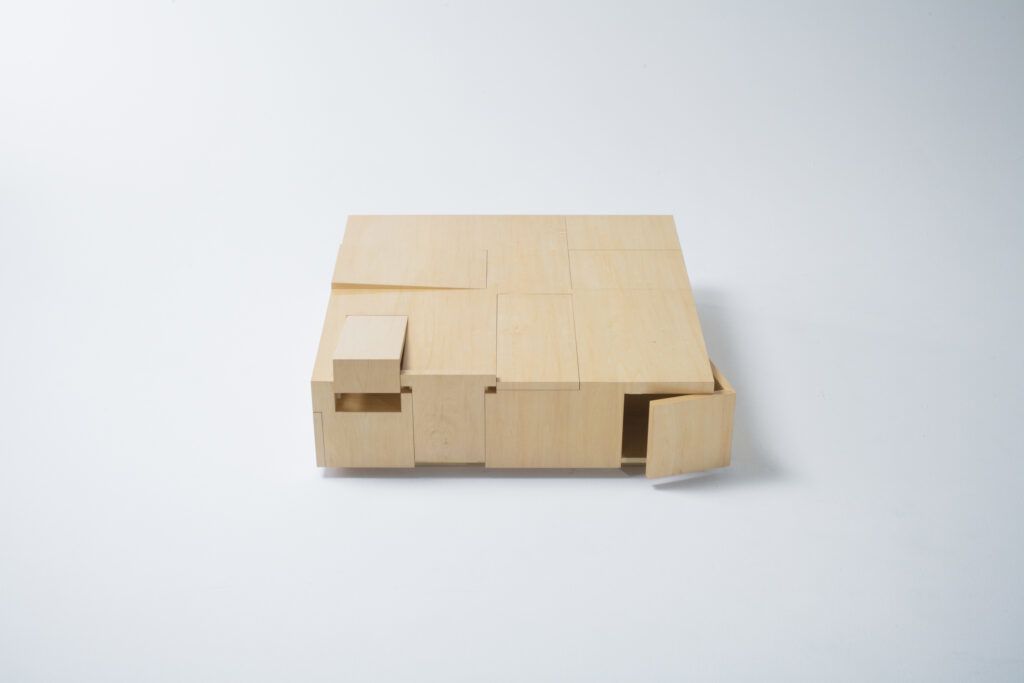
The Kai Table is available for purchase at Generate Design for 935,000 Japanese yen (about $9,000 USD). Here’s their description of the piece.
“Kai Table is an attractive table with hidden drawers and doors of various sizes. At first glance, it looks like a lump of wood, but it has a total of 12 drawers of various sizes and hidden doors that hide the storage space. Kai Table was named after the Japanese word ‘bokai (: Kai: Fudokoro)’. By using most of the volume as storage space, you can smartly store small items that are easily cluttered in the living room. At the same time, it expresses the ‘wideness of the bosom’ that widely accepts various values.”
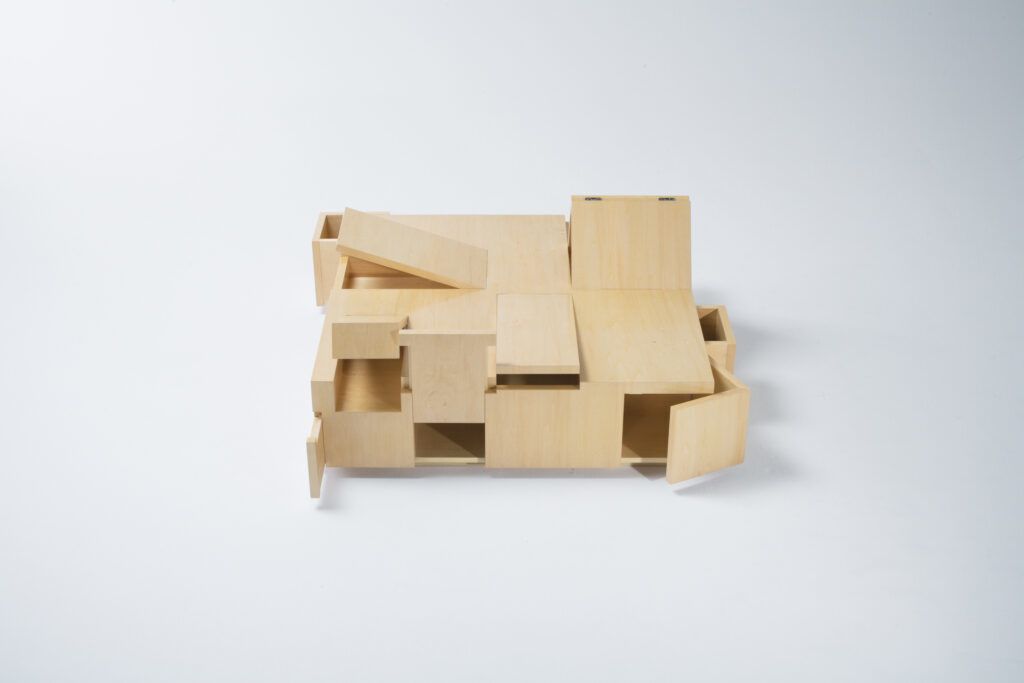
“Not to mention its storage capacity and smart usability, it is an exciting design that will arouse curiosity for everyone. Designed by Naoki Hirakoso. Born in Tokyo in 1974. Graduated from Tokyo University of the Arts, Faculty of Fine Arts, Department of Design. Established hirakoso DESIGN in 2004. Stayed in Milan from 2004 to 2006. Participating in and working on various companies and projects in Japan and overseas. Rebirth Project Designer / Producer.”
About the designer:
“I work on furniture, products, stores and living spaces, and graphic design by finding out what I really need and thinking about subtraction, not designing to add.”




